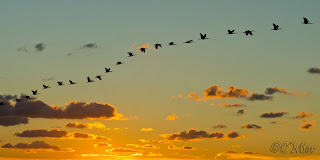After holding my breath for several weeks, I finally got back to the Everglades National Park last weekend. It was a perfect day to be out there. We were on Chokoloskee Bay before sunrise and the full moon shone bright over the bay that was interrupted with large oyster bars. My entire morning was spent paddling around the labyrinth of islands that separate the very large Chokoloskee Bay from the even larger Gulf of Mexico. It didn't matter to me that I was not photographing birds (they were so uncooperative), I was content simply paddling with the tides.
I have many memories on Chokoloskee Bay, the waters where I learned to kayak and canoe and where I learned to photograph from a boat. It is not an easy place to photograph, in fact it is down right harsh. The bay is riddled with oyster bars, very sharp oyster bars. Of course, these are where the birds are found and if I wanted to photograph them, I had to learn how to ease my way toward them while making sure my boat did not get sliced to pieces with the unrelenting oyster shells.
Back in 2007, I shot one of my favorite images on Chokoloskee Bay (next image below); I title it "Life Goes On" and it will be displayed soon at the Pauline Reeves Gallery in Everglades City. This is a special image of a white pelican in the summer. White pelicans normally are not found on the bay in the summer; in March they head north to breed and nest. In October, they arrive again to stay in the warm Everglades during the winter months. I guessed that this bird was old or sick and could not make the migration that year.
Chokoloskee Bay is also my first introduction to the Ten Thousand Islands. Within the boundary of the park, the Ten Thousand Islands are accessed by first crossing this very large bay. In the summer, the daily storms can make the bay treacherous, but this can also be a beautiful time on the bay. I spent many summer mornings on the bay watching storms ride in before I high tailed it to land.
Whenever I need a quick Everglades fix, Chokoloskee Bay is where I go. I always took for granted that I would have the Everglades National Park whenever I wanted and it was so easily accessed from Chokoloskee Island. But not anymore. I will never take the park for granted again.















































